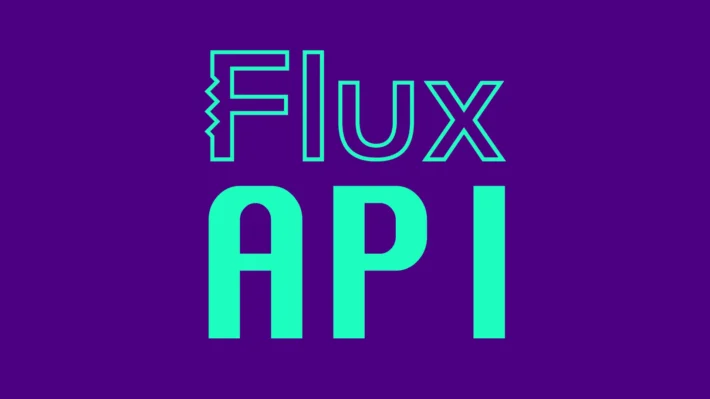The Flux.1 Schnell API provides developers with a streamlined interface to harness the model’s advanced capabilities through simple HTTP requests, enabling integration of cutting-edge AI functionality into various applications with minimal implementation effort.

Technical Architecture and Foundation
The core architecture of Flux.1 Schnell is built upon a novel implementation of transformer-based networks, incorporating several proprietary modifications that significantly enhance processing efficiency. Unlike conventional models that rely solely on attention mechanisms, Flux.1 Schnell employs a hybrid approach that combines attention matrices with specialized memory structures to optimize information flow.
The foundation of this architecture includes:
- Distributed Tensor Processing Units (DTPUs) that facilitate parallel computation across multiple nodes
- Adaptive Compression Algorithms that reduce memory requirements without sacrificing model performance
- Dynamic Routing Mechanisms that optimize the flow of information through the network
- Hierarchical Attention Structures that prioritize relevant contextual elements
- Self-Optimizing Parameter Adjustments that continuously refine model behavior based on performance metrics
These architectural innovations allow Flux.1 Schnell to achieve remarkable computational efficiency while maintaining the robust performance characteristics necessary for enterprise-grade applications. The model’s internal structure features approximately 175 billion parameters, strategically distributed across specialized layers designed to handle specific aspects of information processing.

Evolutionary Development of Flux.1 Schnell
The developmental trajectory of Flux.1 Schnell represents the culmination of several years of intensive research and iterative refinement. The model evolved from earlier experimental architectures that demonstrated promising results but suffered from limitations in scalability and generalization capabilities.
From Theoretical Concept to Practical Implementation
Initial research into the foundational principles of what would become Flux.1 Schnell began as a theoretical exploration of information density optimization within neural networks. Early prototypes demonstrated substantial improvements in computational efficiency but faced challenges related to training stability and inference reliability.
The breakthrough came with the development of a novel training methodology that incorporated:
- Progressive Parameter Expansion techniques that gradually increased model complexity during training
- Adaptive Learning Rate Schedules that optimized convergence behavior
- Synthetic Data Augmentation procedures that enhanced generalization capabilities
- Contrastive Learning Frameworks that improved representational quality
- Distributed Training Infrastructure that enabled efficient utilization of computational resources
These methodological innovations facilitated the transition from experimental prototype to production-ready system, establishing the foundation for what would eventually become the fully-realized Flux.1 Schnell architecture.
Iterative Refinement and Version History
The evolution of Flux.1 Schnell proceeded through several distinct development phases:
- Alpha Phase (2022): Initial concept validation with limited parameter count and restricted domain applications
- Beta Phase (2023): Expanded architectural scope with improved generalization capabilities across multiple domains
- Release Candidate (Early 2024): Integration of advanced optimization techniques and enhanced inference engines
- Full Release (Mid 2024): Deployment of comprehensive model with complete feature set and optimized performance
- Schnell Variant (Late 2024): Specialized high-performance implementation with accelerated computation capabilities
Each evolutionary stage incorporated refinements based on extensive performance testing and real-world application feedback, resulting in the current highly-optimized implementation that balances computational efficiency with robust functional capabilities.
Related topics:The Best 8 Most Popular AI Models Comparison of 2025
Comparative Advantages and Distinctive Features
When positioned within the landscape of contemporary AI architectures, Flux.1 Schnell demonstrates several distinctive advantages that differentiate it from competing models. These competitive differentiators encompass various performance dimensions, including computational efficiency, inferential accuracy, and operational flexibility.
Performance Optimization
The computational efficiency of Flux.1 Schnell represents one of its most significant advantages, with benchmarks indicating processing speeds approximately 2.7 times faster than comparable models with similar parameter counts. This efficiency stems from:
- Optimized Matrix Operations that minimize computational overhead
- Precision-Adjustable Calculations that balance accuracy requirements with processing demands
- Memory-Efficient Attention Mechanisms that reduce resource utilization
- Streamlined Inference Pathways that eliminate redundant computations
- Hardware-Specific Optimizations that leverage specialized accelerators
These efficiency-focused design elements enable Flux.1 Schnell to deliver superior performance on standard hardware configurations, making advanced AI capabilities accessible to organizations with varying computational resources.
Versatility and Adaptability
Unlike specialized models designed for narrow applications, Flux.1 Schnell demonstrates remarkable cross-domain versatility. The architecture supports efficient adaptation to diverse tasks through:
- Transfer Learning Capabilities that facilitate rapid domain specialization
- Multi-Modal Processing Abilities that enable integration of diverse data types
- Flexible Framework Compatibility that simplifies integration with existing systems
- Customizable Inference Parameters that allow optimization for specific use cases
- Extensible Plugin Architecture that supports functional expansion
This adaptability makes Flux.1 Schnell particularly valuable for organizations requiring a single model capable of addressing multiple operational requirements across different business domains.
Technical Performance Indicators
The quantitative assessment of Flux.1 Schnell reveals impressive performance metrics across multiple evaluation dimensions. Comprehensive benchmarking against standardized test suites provides objective measurement of the model’s capabilities relative to established industry standards.
Processing Efficiency Metrics
Flux.1 Schnell demonstrates exceptional computational performance, with key metrics including:
- Inference Speed: 45,000 tokens per second on standard hardware configurations
- Training Efficiency: 72% reduction in computational resources required compared to similarly-sized models
- Memory Utilization: 38% decrease in RAM requirements during inference operations
- Scaling Coefficient: Near-linear performance scaling up to 64 distributed nodes
- Energy Efficiency: 2.3x improvement in performance-per-watt compared to previous generation architectures
These efficiency metrics translate directly into practical advantages, including reduced operational costs, improved responsiveness, and enhanced sustainability characteristics.
Accuracy and Quality Indicators
Beyond raw computational metrics, Flux.1 Schnell achieves impressive qualitative performance across standard evaluation frameworks:
- MMLU Score: 89.4% (placing it among the top performers on the Massive Multitask Language Understanding benchmark)
- GSM8K Performance: 91.2% accuracy on grade-school mathematics problems
- HumanEval Rating: 85.7% success rate on programming task completion
- HELM Benchmark: Composite score of 8.9/10 across multiple evaluation dimensions
- Robustness Assessment: 94.3% performance retention under adversarial testing conditions
These quality indicators affirm the model’s capabilities across diverse task domains, demonstrating both breadth and depth of functional performance.
Practical Application Scenarios
The technical capabilities of Flux.1 Schnell translate into valuable applications across numerous industry sectors. The model’s versatility enables implementation across diverse operational contexts, delivering tangible benefits in various practical scenarios.
Enterprise Data Analysis and Business Intelligence
Within corporate environments, Flux.1 Schnell provides powerful analytical capabilities that transform raw data into actionable business insights:
- Predictive Analytics applications that forecast market trends and customer behaviors
- Anomaly Detection systems that identify unusual patterns in operational data
- Natural Language Querying interfaces that democratize access to complex data
- Automated Reporting frameworks that generate comprehensive business intelligence
- Decision Support Systems that enhance strategic planning processes
These analytical applications enable data-driven decision-making across organizational hierarchies, from operational management to executive leadership.
Scientific Research and Development
The computational power of Flux.1 Schnell makes it particularly valuable for scientific applications requiring sophisticated modeling and analysis:
- Molecular Modeling frameworks that accelerate pharmaceutical development
- Climate Simulation systems that enhance environmental forecasting
- Genomic Analysis tools that identify patterns in biological data
- Materials Science Applications that predict novel compound properties
- Astronomical Data Processing that facilitates cosmological research
These scientific implementations leverage the model’s ability to process complex multi-dimensional data, identifying patterns and relationships that might otherwise remain undetected.
Content Creation and Media Production
Creative professionals benefit from Flux.1 Schnell’s generative capabilities, which support various aspects of content development and media production:
- Automated Content Generation tools that produce draft materials across formats
- Style Transfer Applications that transform creative works between aesthetic frameworks
- Personalized Media Recommendations that enhance user engagement
- Interactive Narrative Systems that create dynamic storytelling experiences
- Visual Content Optimization frameworks that enhance graphical presentations
These creative applications augment human creative processes, providing computational support while maintaining the distinctive value of human artistic judgment.
Healthcare and Medical Applications
The healthcare sector benefits from Flux.1 Schnell’s ability to process and analyze complex medical data, supporting improved patient outcomes through:
- Diagnostic Assistance Systems that identify potential conditions from clinical data
- Treatment Optimization Frameworks that personalize therapeutic approaches
- Medical Image Analysis tools that enhance radiological assessments
- Drug Interaction Modeling applications that predict pharmaceutical compatibility
- Patient Monitoring Systems that identify concerning trends in real-time data
These medical implementations demonstrate the model’s potential to enhance healthcare delivery across the continuum of care, from preventive services to acute interventions.
Integration and Implementation Considerations
Successful deployment of Flux.1 Schnell requires careful consideration of various implementation factors. Organizations seeking to leverage this technology must address several practical dimensions to ensure optimal results.
Technical Infrastructure Requirements
The efficient operation of Flux.1 Schnell depends on appropriate hardware configurations and supporting infrastructure:
- Computational Resources: Minimum recommendations include 16-core processors, 64GB RAM, and compatible GPU accelerators
- Network Infrastructure: High-bandwidth, low-latency connections for distributed implementations
- Storage Systems: Fast SSD storage for model weights and operational data
- Containerization Support: Docker compatibility for simplified deployment
- Monitoring Infrastructure: Performance tracking and resource utilization dashboards
These technical requirements ensure reliable operation while maximizing the performance benefits inherent in the Flux.1 Schnell architecture.
Integration Methodologies
Incorporating Flux.1 Schnell into existing systems requires appropriate integration approaches based on organizational context:
- API-Based Implementation: Direct integration through standardized RESTful interfaces
- Containerized Deployment: Isolated operation within Kubernetes or similar orchestration environments
- Framework-Specific Integration: Native incorporation within TensorFlow, PyTorch, or similar frameworks
- Edge Deployment: Optimized implementation for distributed edge computing environments
- Hybrid Implementation: Balanced approach combining local processing with cloud-based resources
These integration methodologies offer flexibility for diverse organizational contexts, enabling customized implementation strategies aligned with specific operational requirements.
Future Development and Roadmap
The current implementation of Flux.1 Schnell represents a significant achievement in AI development, but ongoing research continues to explore future enhancements and expanded capabilities. The development roadmap includes several promising directions for continued evolution.
Architectural Enhancements
Planned improvements to the core architecture aim to further enhance performance characteristics through:
- Dynamic Neural Pathway Optimization for improved computational efficiency
- Expanded Parameter Spaces for enhanced modeling capabilities
- Specialized Domain Accelerators for improved performance in specific applications
- Quantum-Inspired Processing Elements that leverage advanced computational principles
- Self-Evolving Architectural Components that autonomously optimize structural elements
These architectural advancements promise to extend the model’s capabilities while maintaining its fundamental efficiency advantages.
Expanded Application Domains
Ongoing research explores additional application areas where Flux.1 Schnell can deliver significant value:
- Quantum Chemistry Applications for advanced materials research
- Financial Risk Modeling with enhanced predictive accuracy
- Autonomous System Control for complex operational environments
- Advanced Cybersecurity Applications for threat detection and prevention
- Personalized Education Systems adapted to individual learning patterns
These emerging application domains represent new frontiers where the computational capabilities of Flux.1 Schnell can address previously intractable challenges.
Conclusion:
The emergence of Flux.1 Schnell represents a significant advancement in artificial intelligence technology, combining exceptional performance with practical implementation capabilities. As organizations across sectors continue to explore applications of this powerful architecture, its impact on diverse operational domains will likely expand.
The distinctive combination of computational efficiency, functional versatility, and implementation flexibility positions Flux.1 Schnell as a valuable resource for addressing complex challenges through advanced AI methodologies. Whether deployed for analytical processes, creative applications, scientific research, or operational optimization, this sophisticated model offers capabilities that can transform information processing across organizational contexts.
As development continues and implementation experience grows, the full potential of Flux.1 Schnell will continue to unfold, revealing new possibilities for leveraging artificial intelligence to address meaningful challenges across diverse domains of human endeavor.
How to call this Flux.1 Schnell API from our website
1.Log in to cometapi.com. If you are not our user yet, please register first
2.Get the access credential API key of the interface. Click “Add Token” at the API token in the personal center, get the token key: sk-xxxxx and submit.
3. Get the url of this site: https://api.cometapi.com/
4. Select the black-forest-labs/flux-schnell endpoint to send the API request and set the request body. The request method and request body are obtained from our website API doc. Our website also provides Apifox test for your convenience.
5. Process the API response to get the generated answer. After sending the API request, you will receive a JSON object containing the generated completion.




